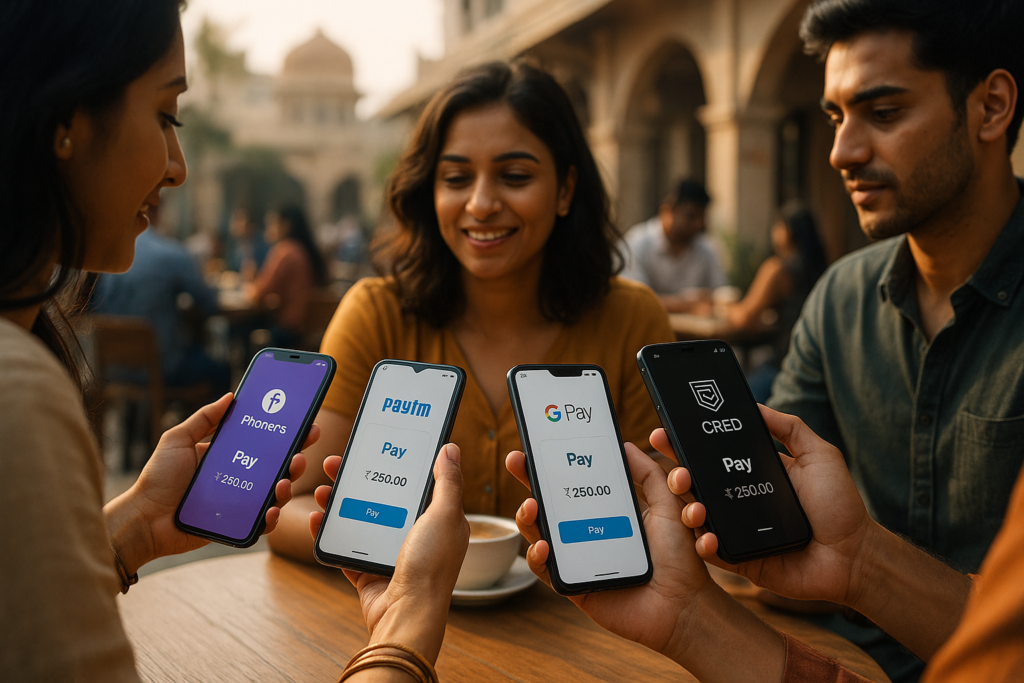India’s payment landscape has transformed drastically over the last few years. Digital wallets like PhonePe, Paytm, Google Pay, and CRED have become integral to everyday transactions. These platforms not only make paying easier but also influence how consumers manage their money, access offers, and build their credit. If you’re curious how these giants are shaping India’s financial ecosystem, this article provides an in-depth overview.
Overview of Digital Wallets in India
Digital wallets or e-wallets are applications that store digital currency, payment information, and offer a secure way to conduct transactions. India’s push towards a cashless economy, driven by government initiatives like Digital India and demonetization, accelerated the adoption of these wallets. Today, they play a pivotal role in ecommerce, utility payments, remittances, and even investment avenues.
Key Players Shaping the Payment Ecosystem
Among numerous players, four giants stand out—PhonePe, Paytm, Google Pay, and CRED. Each has unique features and strategic strengths that have helped shape India’s digital payments landscape.
PhonePe
Owned by Flipkart, PhonePe has become one of India’s leading digital wallets thanks to its extensive merchant acceptance network and wide array of services. It leverages the Unified Payments Interface (UPI) to allow seamless peer-to-peer and merchant transactions. PhonePe also offers financial services like insurance, mutual funds, and gold purchase options, making it more than just a wallet.
Paytm
Established as one of the earliest digital wallets, Paytm has evolved into a comprehensive financial platform. It covers mobile recharges, bill payments, wallets, and even providing banking services through Paytm Payments Bank. Paytm’s strong merchant network and cashback offers have made it popular among small businesses and consumers alike.
Google Pay
As a product of Google, Google Pay (GPay) prioritizes security, simplicity, and integration with the Google ecosystem. It uses UPI technology for quick transactions and has partnered with various banks to offer instant money transfers, bill payments, and investment options. Its user-friendly interface appeals to a broad demographic, especially tech-savvy users.
CRED
Unlike traditional wallets, CRED primarily targets creditworthy users, offering rewards and benefits for credit card payments. It acts as a platform for managing credit cards, ensuring timely payments, and providing exclusive offers. CRED’s focus on credit health and rewards has made it an influential player in India’s credit ecosystem.
How These Platforms Are Shaping Payment Trends
- UPI Adoption: All four giants capitalize heavily on the UPI infrastructure, facilitating instant, contactless payments, which has led to increased cashless transactions.
- Incentives and Cashback: Aggressive cashback schemes and referral rewards attract users and merchants, fueling digital adoption.
- Financial Inclusion: These platforms are expanding access to banking and credit for unbanked populations via mobile wallets and micro-loans.
- Integration of Other Financial Products: From insurance to investments, they are creating an integrated financial services ecosystem.
Advantages of Using Digital Wallets
- Convenience of instant transactions anytime, anywhere.
- Secure payment options with multi-factor authentication.
- Access to exclusive offers and discounts tailored for users.
- Better financial tracking through transaction statements.
- Promotion of a cashless economy, reducing the risk of cash handling.
Challenges and Concerns
- Security Risks: Despite advances, digital wallets remain targets for cyberattacks, phishing, and data breaches.
- Digital Divide: A majority of rural and underbanked populations still lack access to smartphones or reliable internet, limiting the reach.
- Market Dominance: The dominance of a few players could lead to monopolistic practices and limited choice.
- Regulatory Frameworks: Evolving regulations can impact wallet operations, especially concerning data privacy and financial security.
Future Outlook
The future of India’s digital payment ecosystem looks promising. As technologies like AI, machine learning, and blockchain become more embedded, we can expect smarter, more secure, and more inclusive wallets. Moreover, government initiatives encouraging digital payments combined with private sector innovation will continue to expand access and usability.
FAQs
Q1: How safe are digital wallets like PhonePe and Google Pay?
Digital wallets employ multiple security layers, including encryption, two-factor authentication, and biometric verification. However, users should also stay cautious about phishing scams and avoid sharing personal details.
Q2: Can I apply for a digital wallet account online?
Yes, most wallets like Paytm, PhonePe, Google Pay, and CRED allow you to apply and set up your account entirely online through their apps, with instant verification processes.
Q3: What features should I consider before choosing a digital wallet?
Look for features like transaction limits, cashback offers, reward programs, ease of use, security measures, and compatibility with your bank accounts and devices.
Q4: Will digital wallets replace traditional cash and cards?
While digital wallets are increasingly popular, cash and physical cards will still have a role, especially in areas with limited internet access or for certain transactions. The trend indicates a complementary coexistence.
Q5: How do digital wallets impact credit building?
Some wallets like CRED focus on credit health, helping users manage credit card payments and offer rewards. Regular use and timely payments can positively influence your credit score over time.
If you want to explore the best credit card options that complement your digital payment habits, visit our Find My Card page. For more insights on digital payments and personal finance, check out our blog.

